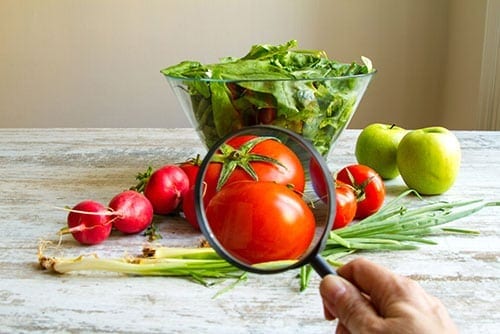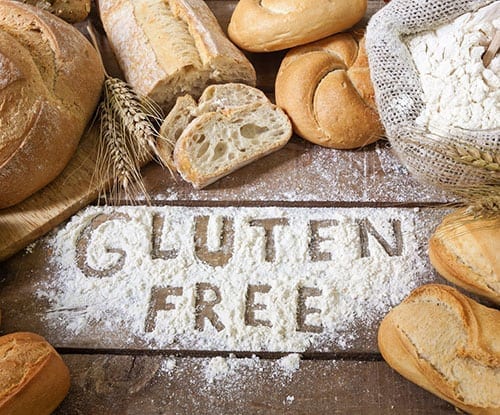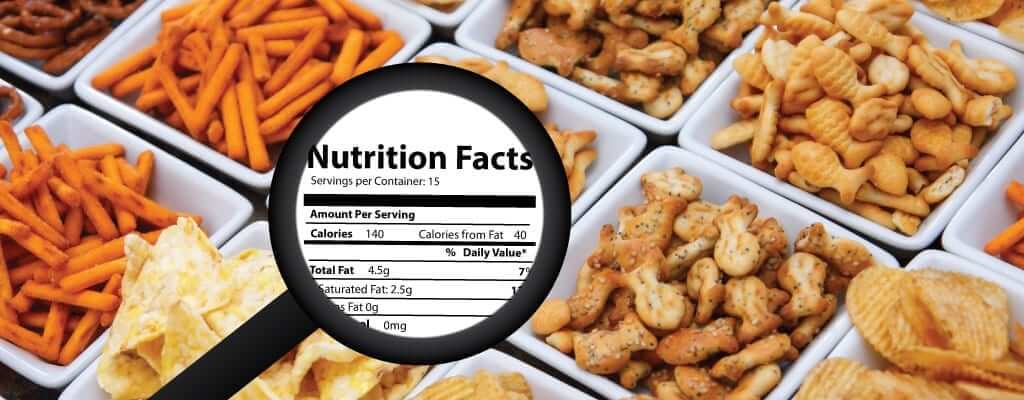There is a wide variety of mislabeled snack foods that are not really what they claim to be. It is essential for people with diabetes to read beyond the marketing hype and get the facts that are often found in small print on labels. Discover the advertising words used to mislead buyers into thinking certain snack foods are healthier choices.
Get the Facts
Often terms such as low-fat and natural are printed boldly across labels on snack foods. Many of these descriptive terms are not formally defined by the United States Food and Drug Administration (FDA). That means they are meaningless and could be inaccurate. Go beyond these alleged health claims when you choose snack foods. Read the labels to determine the actual contents and ingredients used to make the product. You might be surprised to discover a snack claiming to be low-fat has more fat than other options on the shelf. A low-fat version may also have more sodium or sugar than the regular version. People with diabetes need to know the facts and read the labels. Diabetic foods are usually developed to minimize the salt, sugar, and fat often added to snack foods. Always check the labels to verify these snacks fit into your dietary requirements. Work with a dietitian or diabetes nurse educator to help you make smarter choices.
Healthy and Fitness Foods
Snacks might be labeled as “healthy” or “fitness foods.” This empty terminology can be used to describe any snack food without penalties. These are buzzwords used to mislead people into thinking these foods may be better for them. There is no substitute for a balanced diet with healthy snacks to keep your blood sugar levels stable. Avoid fruits packaged in sugary syrups or juices and vegetables canned with added salt. Select fresh or frozen ones instead. Choose low-fat dairy products, such as Greek plain yogurt or portioned cheese in wedges or cubes. Read the labels to verify the sugar, salt, and fat content. Get to know proper portion sizes in anything you eat, including snacks, to avoid consuming more than you should. A snack should not contain more than 100 calories.
Extra Protein
Often people with diabetes are misled into believing a high protein diet will help them lose weight quickly or better maintain their blood sugar levels. Too much protein can lead to weight gain. Your health care team should recommend extra protein in your diet only if you need it. Some people with poor metabolic control may have increased protein requirements. Others may experience adverse effects from excess protein especially those suffering from kidney disease. Always consult with your doctor before making any changes to your diet. If you do need protein in your diet, choose lean meat such as grass-fed beef, eggs, a handful of unsalted nuts, and lentils instead of fad foods.
Natural Foods

No Sugar Added and Sugar-Free
People with diabetes are always concerned about maintaining healthy blood glucose levels and monitoring their weight. Foods with no added sugar might not be sugar-free. Many foods naturally contain sugar carbohydrates- such as milk, yogurt, cereal, beans, starchy vegetables and fruits. The term sugar-free leads people to believe the product is low-calorie but that usually is not true. Some sugar-free foods contain sugar alcohols which can cause gas, bloating and diarrhea that leads to dehydration; dehydration may cause blood sugar spikes. Look for sugar alcohols on the label, such as sorbitol, mannitol, and xylitol. Keep in mind the total carbohydrate content. Added sugars and carbohydrates raise your blood sugar. Read the sugar and total carbohydrate content to make healthier choices.
Multigrain and Whole Grains
People with diabetes are advised to choose whole grains over white ones which are often high in refined sugar and low in fiber. Certain foods marked multigrain or made with whole grain might be misleading; even the brown color might not indicate you are getting a whole-grain product as caramel coloring is used to achieve that tone. Words such as whole wheat, oats, and brown rice are usually whole grains. Look for the 100% Whole Grain Stamp from the Whole Grain Council. Terms that could be misleading include wheat flour, semolina, and multigrain so read those labels carefully. Certain words are never used to describe whole grains, such as enriched flour and degerminated corn meal.
Zero Trans Fat and Fat-Free
Tran’s fat is the “bad” fat that is not good for your heart. People with diabetes already have an increased risk of developing heart disease. But foods marked zero trans-fat may have under 0.5 grams per serving. Two-four servings can add up quickly. Read the labels to avoid foods with hydrogenated shortening and oils. Avoid baking with shortening. Fat-free is another misleading description. While the food might not contain fat it could have more calories and sugar than its regular counterparts. Read the labels to compare your options and make a well-researched decision.
Going Light
It sounds good but is “light” an honest word? Much like other mislabeled snack foods light could refer to the flavor and not the ingredients. Light foods can have the same number of calories as the regular version. An accurately labeled light snack has less than 50 percent the fat found in similar products. Look for the label to get the facts. And go lighter when it comes to meats as snack foods. Remove excess fat from meat and select lean fish with Omega-3s for optimum heart health, such as sardines or salmon. Sausages, bacon, hot dogs and bologna often contain high levels of fat and salt, even if they are labeled as “light.”
Gluten-Free

Made with Real Fruit or Whole Grain
The words “made with” often mean snacks are mislabeled. If food is made with whole grain or real fruit it might not contain much of either. Labels do not have to reveal the percentage of whole grains or fruits used in the product. It is better to choose whole foods rather than speculating if a snack contains fruit or whole grains.
Lightly Sweetened
The FDA defines terms such as no added sugar, sugar-free, and reduced sugar. But lightly sweetened has no FDA definition. It is more marketing terminology meant to entice customers looking for healthy options. People with diabetes always need to check the sugar/carbohydrate content regardless of how the foods are labeled.
Organic
Organic is another word that makes a snack food sound better. Organic foods are defined by the FDA. These foods must contain 95 percent or more of the ingredients grown without pesticides or synthetic fertilizers. The percentage is 70 percent for foods labeled made with organic ingredients. But are organic snacks always a right choice? Organic is not necessarily healthy as these foods can be laden the sugar, calories, and fat. Compare labels to find out what could be hidden in organic snacks.
Mislabeled snack foods can cause your blood sugar, fat intake, and weight to increase rather than decrease. Read the facts on snack food labels rather than the advertising hype. An educated consumer who does his or her research makes the healthiest decisions.







Leave A Comment